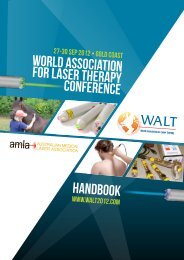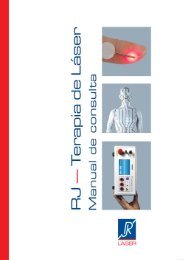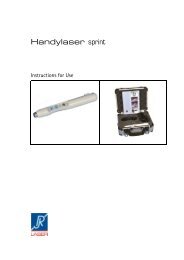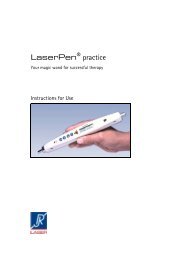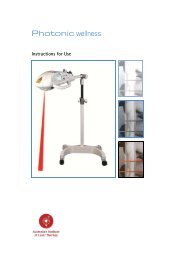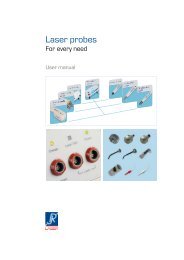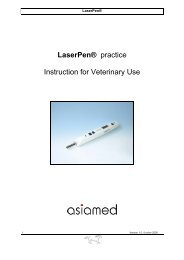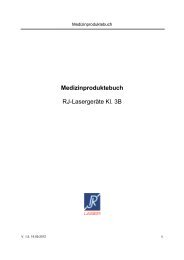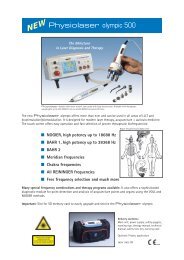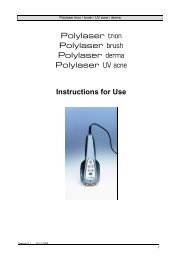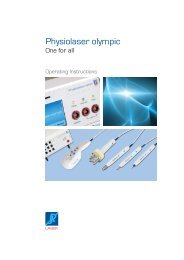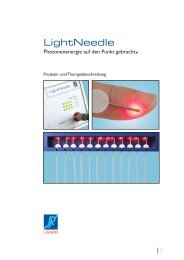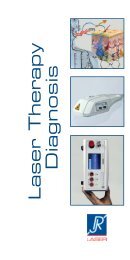LightNeedle - RJ Laser
LightNeedle - RJ Laser
LightNeedle - RJ Laser
You also want an ePaper? Increase the reach of your titles
YUMPU automatically turns print PDFs into web optimized ePapers that Google loves.
Discussion<br />
One of the main advantages of the <strong>Laser</strong>needle ® -technique is its non-invasiveness. It<br />
is possible to apply the laser in such a manner, that the test person cannot feel<br />
optical stimulation of the acupuncture point. In addition, the acupuncturer does not<br />
need to know if the system is activated or deactivated. Thus, double-blind studies<br />
using this new method are possible in acupuncture research for the first time. This<br />
method of study was already performed by our research group [12] and included<br />
simultaneous and continuous monitoring of blood flow velocity in the posterior<br />
cerebral artery and the middle cerebral artery in 17 healthy volunteers. This study<br />
showed that <strong>Laser</strong>needle ® stimulation of distant acupuncture points at hands and<br />
feet (Hegu, Zusanli, Kunlun, Zhiyin) is able to achieve marked and specific changes<br />
in cerebral blood flow velocity [10,12].<br />
Even though laser puncture using Low-Level-<strong>Laser</strong> stimulation devices is an<br />
established method, measurable cerebral effects lie far below conventional needle<br />
acupuncture [13]. The results from the first studies [9,10,12] using the <strong>Laser</strong>needle ®<br />
system revealed significant changes in cerebral parameters (blood flow velocities),<br />
which were otherwise only achieved by manual needle acupuncture. The proportion<br />
of maximum change in blood flow velocity. (needle/laserneedle) is approximately<br />
factor 2.<br />
Since Chinese medicine and acupuncture are considered an integrative part of TCM<br />
based on energetic processes, the registration of changes in the cerebral<br />
metabolism could express energetic processes in the brain and obviously plays a<br />
key role in investigating the effects of acupuncture. To date, it has not been possible<br />
to obtain non-invasive and continuous results regarding regional cerebral<br />
oxygenation. Near-infrared spectroscopy can register changes in oxygenation in the<br />
cerebral vascular region very sensitively. The advantages of transcranial oximetry<br />
are its non-invasiveness, low risks and continuity, as well as its easy and time-saving<br />
application. A wide range of indications are the result for the potential use of this<br />
spectroscopic method [4].<br />
11



